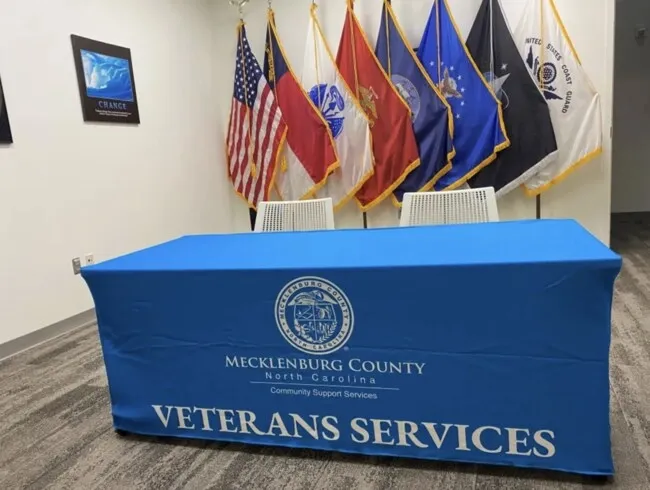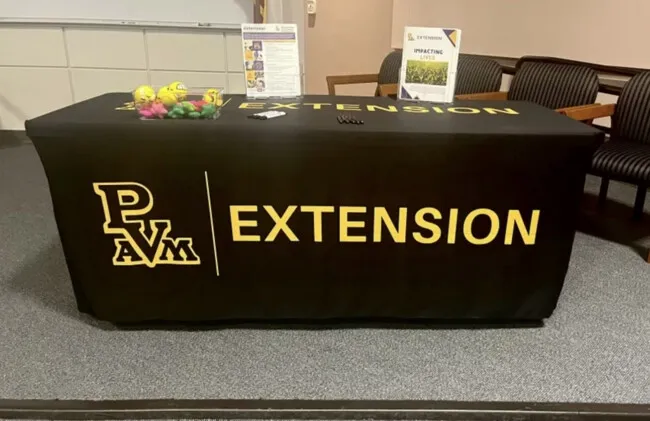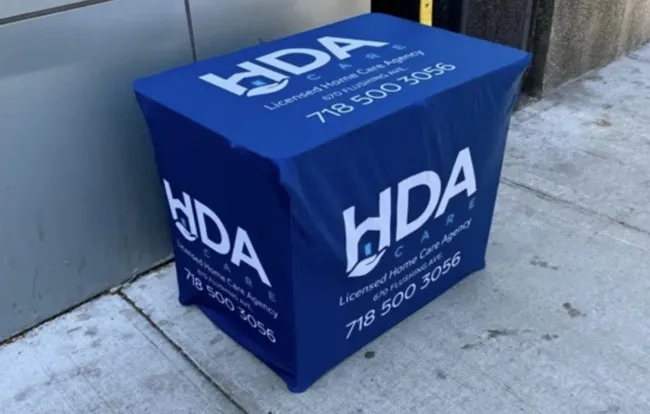How To Make A Fitted Tablecloth: A DIY Guide For Stylish Dining
Welcome to our guide on how to make a fitted tablecloth. Take your dining experience to the next level with our step-by-step instructions, perfect to add a little personalized style and sophistication to your table setting. Read on to learn all you need to know.

Key Takeaways
- Making a DIY fitted tablecloth is all about taking accurate measurements and adding elastic for a snug fit to your table.
- Fabric choices vary, but durable cotton, linen, or polyester are good choices.
- You can add waterproof coatings to fabrics if needed, and custom designs can help make your table cover stand out.
- Maintenance is important to preserve the longevity of your DIY elastic tablecloth.
- If the DIY approach is too daunting, you can use our service to create custom fitted tablecloths tailored to your specific needs.
Table of contents
-
How To Make A Fitted Tablecloth & Cover
-
Materials Needed For A DIY Fitted Tablecloth
-
General Steps To Create A Fitted Tablecloth Pattern
-
How To Make A Fitted Tablecloth For A Rectangular Table
-
DIY Elastic Tablecloth Tutorial
-
How To Make A Round Fitted Vinyl Tablecloth
-
A Simple Guide For A DIY Fitted Vinyl Tablecloth
-
How To Make A Waterproof Fitted Tablecloth
-
How To Sew A Fitted Table Cover
-
How To Create A Fitted Tablecloth For A Kid's Table
-
Tablecloth Maintenance And Tips
How To Make A Fitted Tablecloth & Cover
Making a fitted tablecloth yourself enables you to personalize your dining space with a custom look that works for your dimensions and preferred style. You might be preparing for a special occasion ro simply refreshing your home decor; either way, DIY fitted tablecloths are a budget-friendly and creative solution.
Alternatively, you could work with a custom tablecloth company like us to get a perfect fit and a professional look with a fast turnaround. In this guide, we offer advice on how to make a fitted tablecloth and also show you how you could use our service to your advantage.

What Is A Fitted Tablecloth?
A fitted tablecloth is one that fits snugly over the surface of your table. Unlike traditional tablecloths, which have a loose drape, fitted tablecloths are elasticized or tailored to conform closely to your table’s shape.
With this snug fit, you get a neat and tidy appearance with practical benefits like no slipping or bunching. Custom fitted table covers can be optimized for your needs, both practical and aesthetic.
Why Choose A Fitted Tablecloth?
Opting for a fitted tablecloth offers various benefits over a traditional one. Let’s look at some of them:
- Sleek, polished appearance: The fit hugs the table's contours seamlessly for a sleek look.
- A tailored look: The aesthetic adds sophistication to your decor, perfect for everyday use and special occasions.
- Less slipping: WIth their tight adherence to the table, fitted table covers are less likely to shift or bunch.
Fitted tablecloths are often easier to care for, as they stay in place securely and require less maintenance.
Materials Needed For A DIY Fitted Tablecloth
For your DIY fitted tablecloth, you will need to gather essential materials for the production process. These include:
- Fabric in your desired color and pattern.
- Elastic for the fitted edges.
- Measuring tape to determine the optimal size.
- Sewing supplies (scissors, pins, and a sewing machine/needle and thread).
A durable material like cotton or linen is generally recommended for longevity. The elastic you choose should be appropriate for your table’s size and shape. If all this seems daunting, our service can take the production side out of it so you focus on creating a custom design.
Want to avoid the DIY work?
Work with us to design your own custom fitted table covers and let us do the crafting, bringing your design to life in perfect detail at an affordable price.
General Steps To Create A Fitted Tablecloth Pattern
To create a fitted tablecloth pattern, you must first gather accurate measurements for your table’s length, width, and height, incorporating allowances for seams and hems. Determine the shape of your table’s corners, as they may be square or rounded.
When you are ready, cut your fabric according to the measurements and shape. Sew the corners and edges, making sure to leave openings to insert the elastic. Then, measure and cut the elastic to fit the edges and sew it into place for a snug fit. Test the tablecloth to see if any adjustments are needed.
Measuring Your Table
Here’s how to measure for a tablecloth:
- Determine how far you want the cloth to hang over the edges of the table.
- Use a tape measure to measure the length and width of the table (or the diameter for a circle).
- Add twice the drop length to your table’s dimensions for an even drop on all sides.
Accurate measurements are a crucial part of how to make a fitted tablecloth.
Choosing The Right Fabric
DIY fitted tablecloths can be crafted from various fabrics. Here are some common ones, and the benefits of each:
- Cotton: Soft and breathable, this fabric is suitable for everyday use.
- Linen: Luxurious with a natural texture, this adds sophistication to any setting.
- Vinyl: Water-resistant and easy to clean, this is ideal for frequent use.
Ultimately, the best fabric for a tablecloth comes down to your personal needs and preferences. We offer polyester and stretch spandex for our custom products.
How To Make A Fitted Tablecloth For A Rectangular Table
Here’s how to make a fitted tablecloth for a rectangular table:
- Measure the length, width, and height of the table.
- Add allowances for seams and hems.
- Cut the fabric according to the measurements, ensuring it will cover the whole table and reach the desired overhang on all sides.
- Sew the corners and edges, leaving openings for elastic insertion.
- Measure and cut the elastic to fit the edges, then sew into place for a snug fit.
- Test the tablecloth on the table and adjust as needed.
We can create custom rectangle tablecloths with a fitted design to your exact specifications and do all the production for you.
Get the elastic feature with a custom fit
We can create custom-fit elastic table covers that will adhere to the contours of your table tightly and display your personalized design for a stylish appearance.
Start creating todayDIY Elastic Tablecloth Tutorial
To incorporate elastic into the hem of your DIY tablecloth, you should begin by sewing a channel along the fabric’s edge. Leave small openings in which to insert the elastic. When this is done, thread the elastic through the channel safely using a safety pin or bodkin, ensuring it’s snug but not overly tight.
Finally, secure the elastic ends together and stitch the openings closed. This creates a tailored fit that holds the tablecloth in place.
How To Make A Round Fitted Vinyl Tablecloth
To make a round fitted vinyl tablecloth, begin by tracing the outline of your table onto the vinyl fabric. You should add a few extra inches for a snug fit. Next, cut out the circle shape and fold over the edges before hemming them, securing with fabric glue or double-sided tape.
When ready, cut a piece of elastic to fit the circumference of the table and sew it onto the hem, ensuring even distribution for a secure fit. Again, we can make custom round fitted tablecloths if this is too daunting.
Need to display your logo on a table?
Create a sleek, tailored look with custom fitted table covers and add your logo with our high-quality customization service for the perfect solution for your tables.
A Simple Guide For A DIY Fitted Vinyl Tablecloth
If you are seeking how to make a fitted tablecloth from vinyl for beginners, start by cutting a piece of vinyl fabric to the dimensions of your table. Fold over the edges and secure with fabric glue or double-sided tape. Then, cut and sew the elastic to the edges to achieve your secure fit.
Tablecloths are still a stylish choice, and you can take all the crafting work out of it by working with us. We can bring your custom design to life in meticulous detail.

How To Make A Waterproof Fitted Tablecloth
To make a waterproof fitted tablecloth, the first step is to select a waterproof fabric like vinyl or oilcloth. From there, the method looks like this:
- Measure your table’s dimensions accurately and add a few extra inches for the drop length.
- Cut your fabric to size, ensuring it covers the tabletop and reaches your desired drop length on all sides.
- Sew a hem along the edges, leaving small openings to insert the elastic.
- Thread the elastic through the channels, aiming for a snug fit.
- Secure the elastic edges together and stitch the openings closed.
Selecting Waterproof Fabrics
When you select waterproof fabrics for a fitted tablecloth, you have a number of options at your disposal. Here are some of them:
- Oilcloth: A durable, low-maintenance material.
- Laminated cotton: Soft to the touch with water-resistant properties.
- Treated polyester: Resistant to stain and spills with excellent waterproofing.
- Vinyl: Known for its versatility and durability.
- Sunbrella: A popular outdoor fabric with water resistance and UV protection.
Different fabrics offer different advantages, so consider your options when assessing how to make your fitted tablecloth.
Step-By-Step Waterproofing Process
To make fitted elastic tablecloth waterproof, start by making sure it is clean and dry. Then, the process goes like this:
- Apply a waterproofing spray or solution to the fabric, following the instructions closely.
- Allow the fabric to dry completely before using it.
- Reapply the treatment periodically to preserve the fabric’s water-resistant properties.
For maintenance, always aim to wipe spills promptly with a damp cloth and mild detergent. And avoid using abrasive cleaners that might damage the waterproof coating.
Achieve a tailored look on a round table
With our custom-fit round table covers, you can get the perfect look for your circular tables with personalized covers that hug the contours of the table.
Create yours todayHow To Sew A Fitted Table Cover
To sew a fitted table cover, you should start by ensuring your measuring process allows for seams and hems. Cut the fabric in accordance with those measurements, then pin and sew the corners and edges together, making sure to leave openings for elastic insertion.
Measure and cut the elastic to fit the edges, then sew it into position. A snug fit is important at this stage. Once done, test the table cover on the table and adjust as necessary for the perfect finish.
Customizing Your Fitted Table Covers
You may want to customize your DIY fitted tablecloth for a special occasion or to match the other decor in your space. Ideas for this include:
- Adding borders in contrasting fabrics for a pop of color.
- Incorporating patterns or prints that complement the surrounding decor.
- Experimenting with decorative stitches.
These creative touches can make your table cover unique and eye-catching. With our service, you can create printed or custom embroidered table runners with any design you want and we ensure a professional finish no matter what design you choose.
How To Add Elastic To A Tablecloth For A Perfect Fit
You can convert virtually any tablecloth into a fitted one with the following step-by-step method:
- Measure the perimeter/circumference of your table and add a few extra inches for overlap.
- Cut a piece of elastic to this length.
- Pin the elastic to the inside edges of the tablecloth, stretching it tight as you sew for a snug fit.
- Sew the elastic in place with a zigzag stitch then trim away any excess fabric.
- Test the tablecloth on the intended table and adjust as necessary for the optimal fit.
How To Create A Fitted Tablecloth For A Kid's Table
To begin creating a DIY elastic tablecloth for a kid’s table, choose a cotton, linen, or polyester fabric with a playful pattern and/or a vibrant color. The use the following method:
- Measure the table dimensions and add allowance for seams and hems.
- Cut the fabric to those measurements and sew the corners and edges together, leaving openings to insert the elastic.
- Measure and cut the elastic, then feed it through and sew into place.
- Test the tablecloth and adjust as necessary for a snug, tailored finish.
Tablecloth Maintenance And Tips
Once you have completed your DIY fitted tablecloth, you need to maintain it. Here are some tips for keeping it in good condition:
- Spot clean spills promptly with a damp cloth and mild detergent to avoid stains.
- Machine wash on a cool, gentle cycle with a mild detergent for deep cleaning.
- Avoid using harsh chemicals and always air dry to protect the fabric.
- Learn how to iron a tablecloth safely, following the appropriate instructions for your fabric.
Storage is important as well. Keep your tablecloth in a cool, dry place away from direct sunlight when not in use.
How To Clean And Maintain Different Types Of Tablecloths
Preserve the pristine condition of your DIY fitted tablecloth by choosing the correct cleaning method for your fabric:
- Cotton: Machine wash with cool water and a gentle detergent. Tumble dry on a low heat or air dry.
- Linen: Hand wash in cold water with a mild detergent then air dry.
- Polyester: Machine wash with warm water and a mild detergent, then tumble dry on a low heat or air dry.
- Vinyl: Wipe clean with a damp cloth and mild soap, the towel dry.
- Lace: Hand wash carefully in cold water with a mild detergent. Lay flat to air dry.

Quick Fixes For Common Tablecloth Issues
Here are some simple solutions to common issues you may experience with your DIY elastic tablecloth:
- Wrinkles: Hang the tablecloth and carefully use a handheld steamer or iron to tackle wrinkles. Good folding and storage are key to avoiding wrinkles.
- Stains: Blot stains with a damp cloth and mild detergent. For tougher stains, use a stain remover spray.
- Loose fits: Make adjustments to the elastic, or add some extra elastic, to achieve a snug fit. Tablecloth clips can help to secure edges in place.
These simple solutions can be used for your DIY fitted tablecloth or for one that you order from our custom service.
Frequently Asked Questions About How To Make A Fitted Tablecloth
What Are The Steps To Making A Fitted Tablecloth?
Essentially, the steps are choosing your fabric, measuring your table, cutting the fabric carefully, sewing it together with seams and hems, and adding the elastic around the rim. You may need to make some adjustments.
How Do You Make A Fitted Rectangular Tablecloth?
The key is to collect accurate measurements and cut your fabric to the appropriate shape and size for your table. Then, add elastic on the inside to create a tight fit to the perimeter for the rectangle table’s edges.